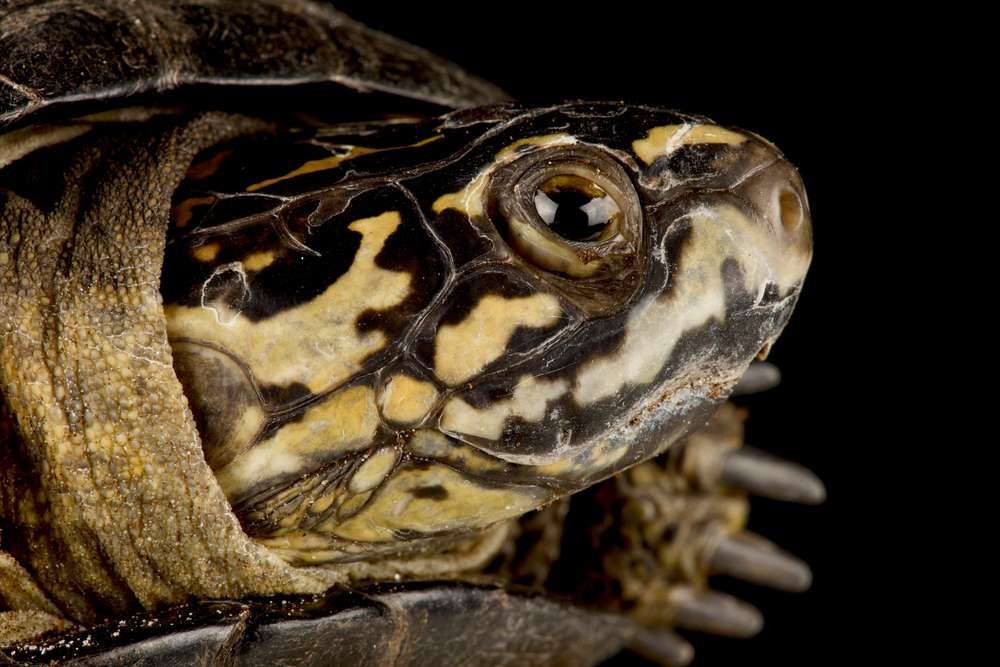Okavango Mud Turtle
( African Hamiltonii )
- Pelusios bechuanicus
- IUCN Status: Least Concern
- Threat: harmless
- Venom/Toxin: none
- Trend: decreasing

- Phylum: Chordata
- Class: Reptilia
- Order: Testudines
- Suborder: Pleurodira
- Family: Pelomedusidae
- Genus: Pelusios
Share:
General Information
The Okavango mud turtle is a large and unique turtle. It very calm and reserved and great for beginners.
Fun Facts!
The okavango mud turtles are the largest mud turtles in the world. Turtles and Tortoises are known to be highly intelligent. They can dig under or plan their escape from captivity, they can learn new tricks and remember them for a very long time. Another interesting feature is that they have both an exoskeleton (the shell on the outside) and an endo-skeleton (the bones on the inside).
Description
The Okavango mud turtle is a large turtle. The carapace (shell) is oval and elongated, with a pronounced dome, and is evenly rounded at the edges which allows the turtle to appear as a smooth rock. The carapace is very dark, often almost black, and lightens up to yellow or orange only at the sides. The plastron (underside-shell) is well developed and can close the shell completely, with a rounded front lobe that comes together to form the hinge that is characteristic of the genus.
These animals have massive heads with bright yellow coloring. They have radiating yellow lines on there shell.
- Length: 25.5 - 36 cm
Ecology and Behaviour
The okavango mud turtle is a semi-aquatic animal that remains in the water most of the year. It is observed outside of the water habitat only when seeking temporary aquatic refuge during the dry season.
Diet
The okavango mud turtle is a carnivore, feeding mostly on fish and invertebrates.
Reproduction
The breeding season occurs during the southern summer and nests are quite large, between 20 and 50 eggs.
Conservation
It is categorized by the International Union for Conservation of Nature (IUCN) as, ” Least Concern “
Distribution and Habitat
The turtle is observed most often in clear, deep, calm waters, in rivers, and in vegetation-choked swamps. Found in central Africa, central Angola, northeastern Namibia, northern Botswana, Zimbabwe, and Zambia.
Interaction with humans
Currently it is mainly threatened by widespread collection from the wild for the illegal international trade in the species. It is also collected by local peoples for food and human population growth in the area is putting pressure on the species. Human-induced fire is also a threat. In most Zambian cultures, turtles and tortoises are revered and respected by people. It is said that one should never kill a turtle or tortoise without reason. If you are to come across one stuck upside down along your path, it is said to be good luck to help it and turn it over to let it goon its way and that doing the opposite or leaving it stuck is very bad luck and karma.
No donation to this project yet.
| M | T | W | T | F | S | S |
|---|---|---|---|---|---|---|
| 1 | 2 | 3 | 4 | 5 | 6 | 7 |
| 8 | 9 | 10 | 11 | 12 | 13 | 14 |
| 15 | 16 | 17 | 18 | 19 | 20 | 21 |
| 22 | 23 | 24 | 25 | 26 | 27 | 28 |
| 29 | 30 | 31 | ||||


